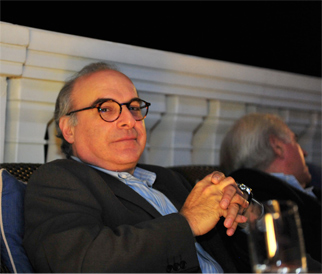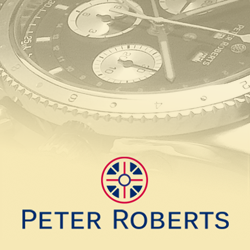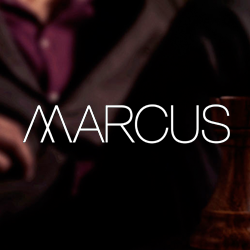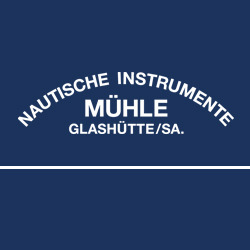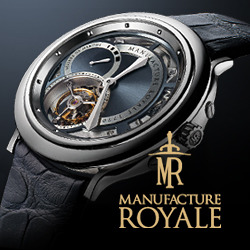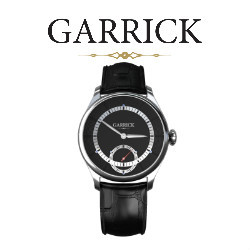Osvaldo Patrizzi
In total contrast to the gloom which has affected the retail watch trade, Antiquorum’s April auction in Geneva confounded everyone. And no-one was more surprised than Antiquorum’s Chairman, the urbane Osvaldo Patrizzi. ‘To say we are delighted is an understatement! These are magnificent results and I don’t think I could ever have imagined back in 1979, when I started wristwatch sales at Antiquorum, that I would one day have the honour and pleasure of auctioning a wristwatch at 6.6 million Swiss Francs!!!’
That’s right: a single wristwatch sold for 6.6m Swiss Francs, or US $4,026,524, a hefty chunk of a weekend’s work which resulted in the company’s second best-ever sessions: SFr. 38,253,851/US $23,325,518, or more than double the pre-sale estimate of SFr. 16m. Quite why Patrizzi is surprised, however, can only be down to the event defying the general malaise of world markets. After all, his firm’s reputation is second to none when it comes to finding the finest timekeepers in the world, and he has yet to host an auction which didn’t feature a handful of ‘start’ lots, so global economic woes could be the only cause of a bad turn-out. He needn’t have worried.
The reason is simple: Antiquorum ONLY auctions watches, clocks and jewellery – no paintings, no vintage cars, no crates of vintage port. So while its main rivals in the world of watch auctions, Sotheby’s and Christie’s, reel from the recent scandals and concern themselves over all auctionable subject matter, Antiquorum continues to dominate a single, and highly lucrative field.
If ever proof were needed that specialising beats playing the jack-of-all-trades, then Antiquorum’s system is all the evidence you need. Patrizzi, a trained watchmaker who cut his teeth in Milan – the centre of the watch enthusiast’s universe, applied his technical knowledge and sheer fastidiousness to the subject of watch collecting, a far newer field than vintage cars or fine art. Now with offices in 10 countries and a handpicked team of experts on call, including the Antiques Roadshow’s Simon Bull, he has created through Antiquorum a network through which few if any rare timepieces escape.
Both vendors and buyers regard Patrizzi as the Papa of the vintage watch world, for he and his crew have created a near-foolproof grading system for the watches they auction. It’s a rare case of absentee bidders (Antiquorum was an early adopter of on-line bidding) knowing precisely what they’ll receive if their bids are successful. Each lot is graded for condition and originality using a system so detailed that it references over 100 points in three main categories. To assist the bidder, Antiquorum – unlike its rivals – includes a superb photograph of every lot in its catalogues. They’ve taken the guesswork out auction bidding. And there’s more: Antiquorum guarantees customer satisfaction, standing by its assessments rather than bleating ‘caveat emptor’.
With this level of respect and trust, it’s no wonder that the April auction at the Hotel Richmond in Geneva witnessed the establishing of 13 new world records, including the aforementioned wristwatch. And not all of them were quite so obvious. The biggest surprise was not a watch but a set of lots consisting of vintage watchmakers’ tools and furniture, highly collectible but hardly the stuff for which fortunes are paid. No longer: the vast selection of horological tools, workbenches, books and documents (Lots 131-222) fetched incredible prices, well above their estimates, and even without the biggest bidder being one of Switzerland’s well financed watch museums.
Almost all of the lots, which accounted for a heady SFr. 2,184,230/US $1,331,847, were purchased by the same Middle Eastern collector. Among them was Lot 222, a draft written by Abraham Louis Breguet, that sold for SFr. 245,500/US $149,695 against an estimate of SFr. 7,000-9,000. This set a world record for ANY horological letter or document ever sold in auction. To explain the sum, all you need to know is that a draft by Breguet is to horology what an original manuscript from Shakespeare is to English literature. To some, even the amount paid is a bargain.
No Antiquorum auction would be the same without something romantic, something redolent of another era by virtue of the story attached to it. The company sold Lawrence Of Arabia’s wrist watch last year, and it turns up timepieces belonging to princes, presidents and kings with alarming regularity. Almost lost amidst the record setters at this auction, for example, was Ettore Bugatti’s personal Breguet chronograph pocket watch. One can only imagine which 1920s or 1930s Grands Prix he clocked with that specific timepiece, how often it meaured the performance of Nuvolari or Williams or Dreyfus.
This auction’s tearjerker (collectors do get emotional about these things) was Lot 607, The Uncovered Amphora attributed to Piguet & Capt, c. 1805. The delightful – and true – story associated with this gem is that Antiquorum sold its identical but mirror-imaged partner, from which it had been separated for a couple of centuries, at an auction in 2001. While the lots were on show in Japan, an lady arrived and said she has a piece identical to the one on display. She returned with the item, and Patrizzi thus witnessed in the most joyous of horological coincidences. An exquisite, gold-and-enamel, pearl-set musical watch, designed as an Amphora and with an automaton scene, it sold for SFr. 4,018,500/US $2,450,305, the new world record for any enamelled watch.
On the way to setting the all-time record for a wristwatch, Patrizzi brought the hammer down on Lot 606, a rare white gold Patek Philippe chronograph from 1944, its SFr. 2,918,500/US $1,779,573 establishing a world record for any chronograph wristwatch. Another Patek Philippe, Lot 591, attracted SFr. 1,477,500/US $900,915 setting a world record for a yellow gold perpetual calendar and moon phase wristwatch.
While Patek Philippe watches remain the most desired by collectors, whatever anyone might argue, some others did get a ‘look-in’ on the record setting. A pocket watch collector dug deep to acquire Lot 604, a unique Walter Prendel pocket chronometer which earned a world record for a German pocket watch at SFr. 1,213,500/US $739,939. For some, even more starting than the million-dollar plus sales was Lot 125, the 1952 Rolex Oyster Chronograph dubbed the Jean-Claude Killy by collectors. Even the finest Rolex steel chronographs normally top out at US $30,000-$50,00. This rarity raised an eye-watering SFr. 322,500/US $196,646, establishing a world record for ANY Rolex watch, regardless of type.
But it was the Patek Philippes which won the day, especially the ‘world time’ models which tell the time in two zones. First, Lot 129, a rare 1950 pink gold ‘World Time’ dress watch set a record for the model with SFr. 597,500/US$ 364,329. Then, the similar Lot 130 with four continents rather than North America on the dial, secured a bid of SFr. 2,753,500/US $1,678,963. But could anyone see what was coming? It was the ‘World Time’ offered as Lot 608 which set the new all time world record price for any wristwatch when it sold for SFr. 6,603,500/US $4,026,524. Dating from 1939 and cased in platinum, it’s probably unique, so for that a collector was prepared to pay the sort of money normally handed over for Picassos or Ferrari 250 GTOs.
If there’s any doubt that wristwatches are now regarded as works of art…
(Boom Issue 1, 2002)
